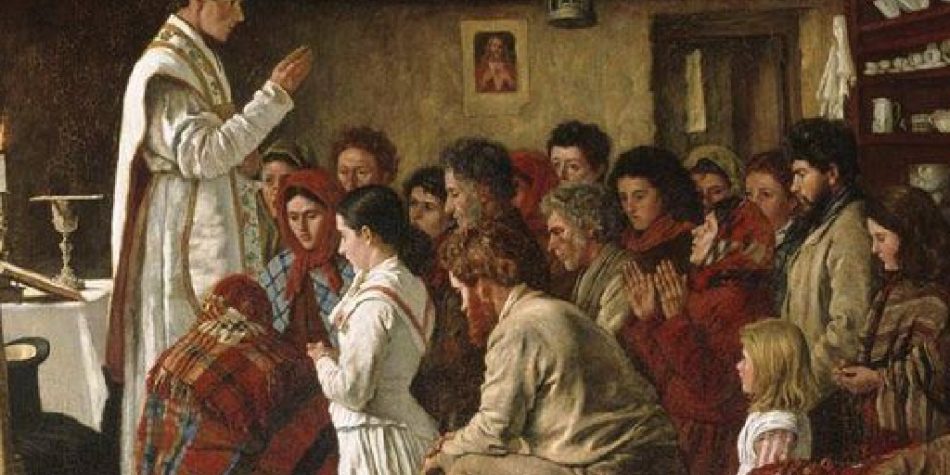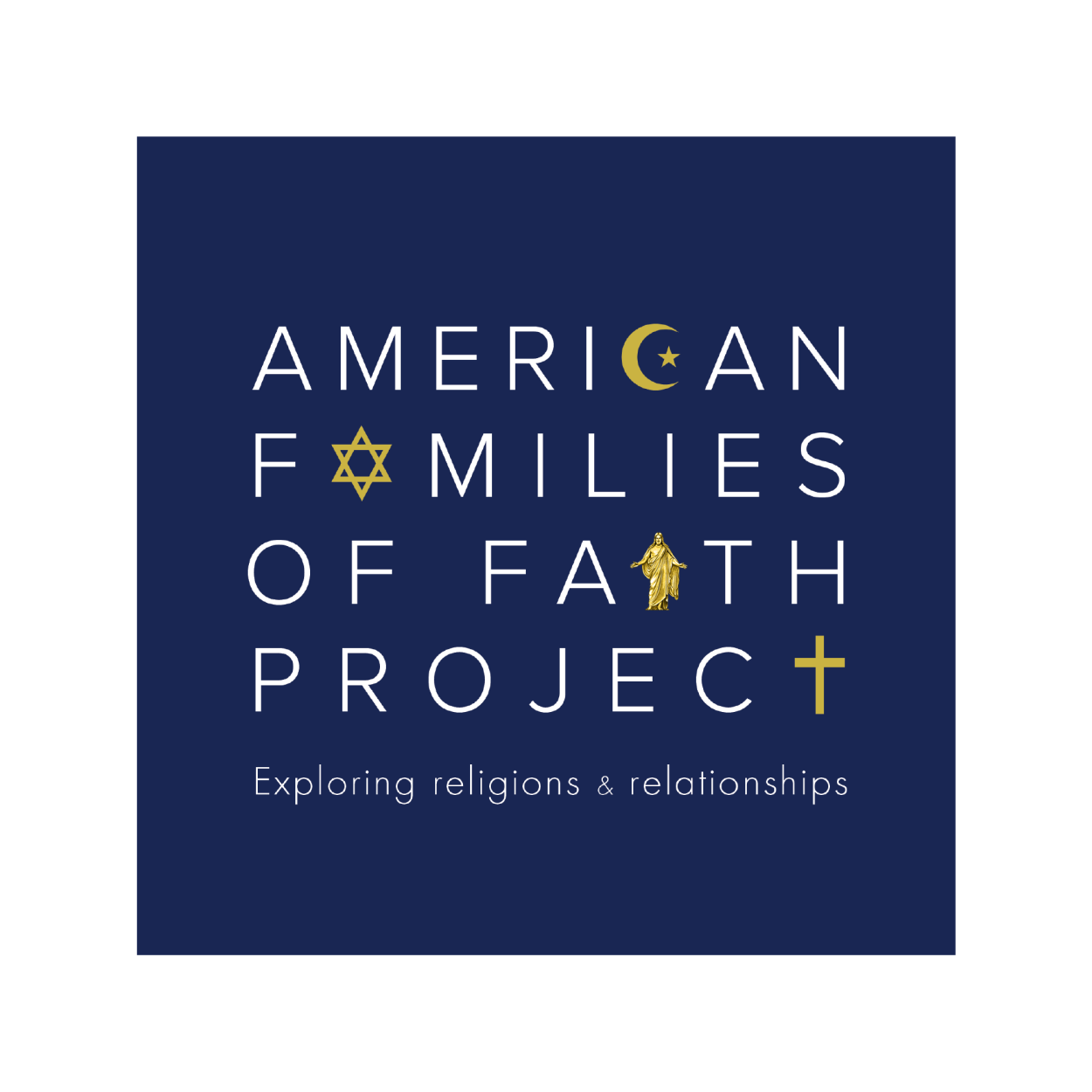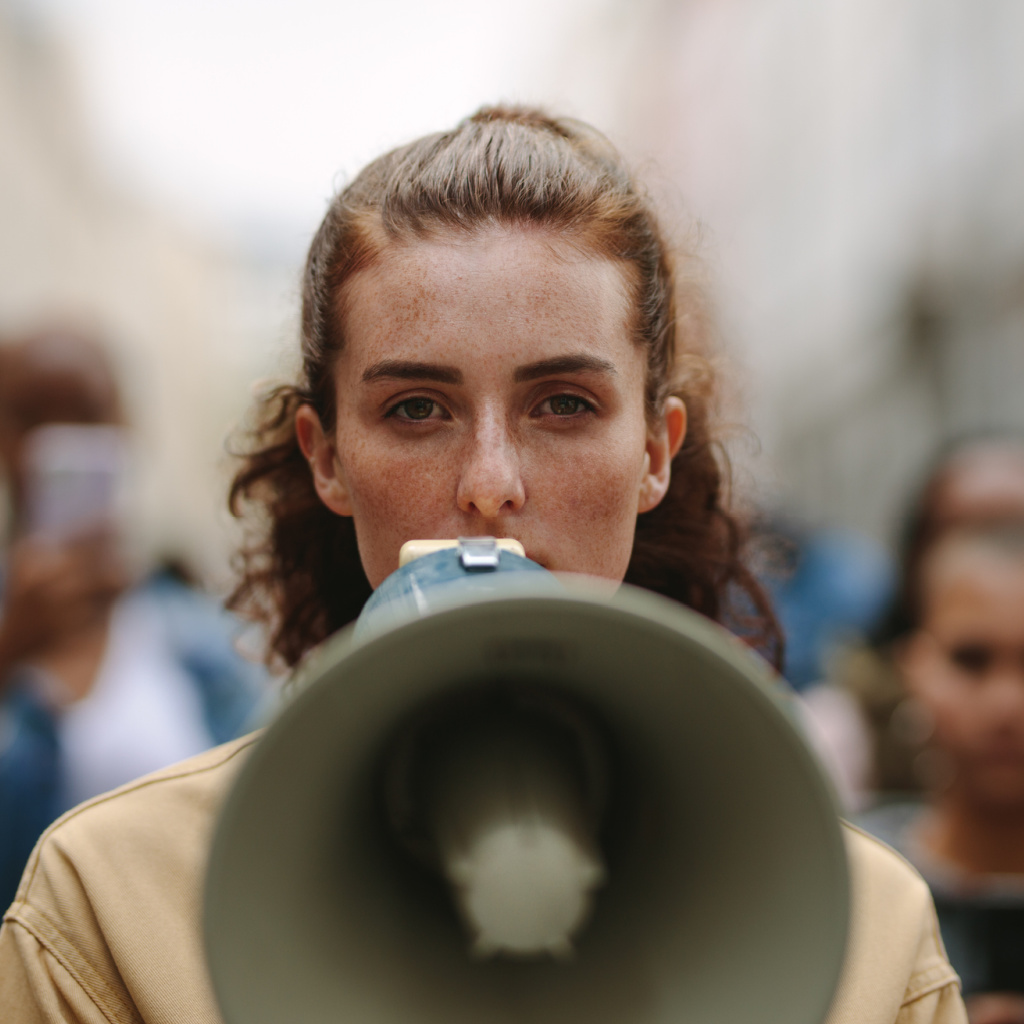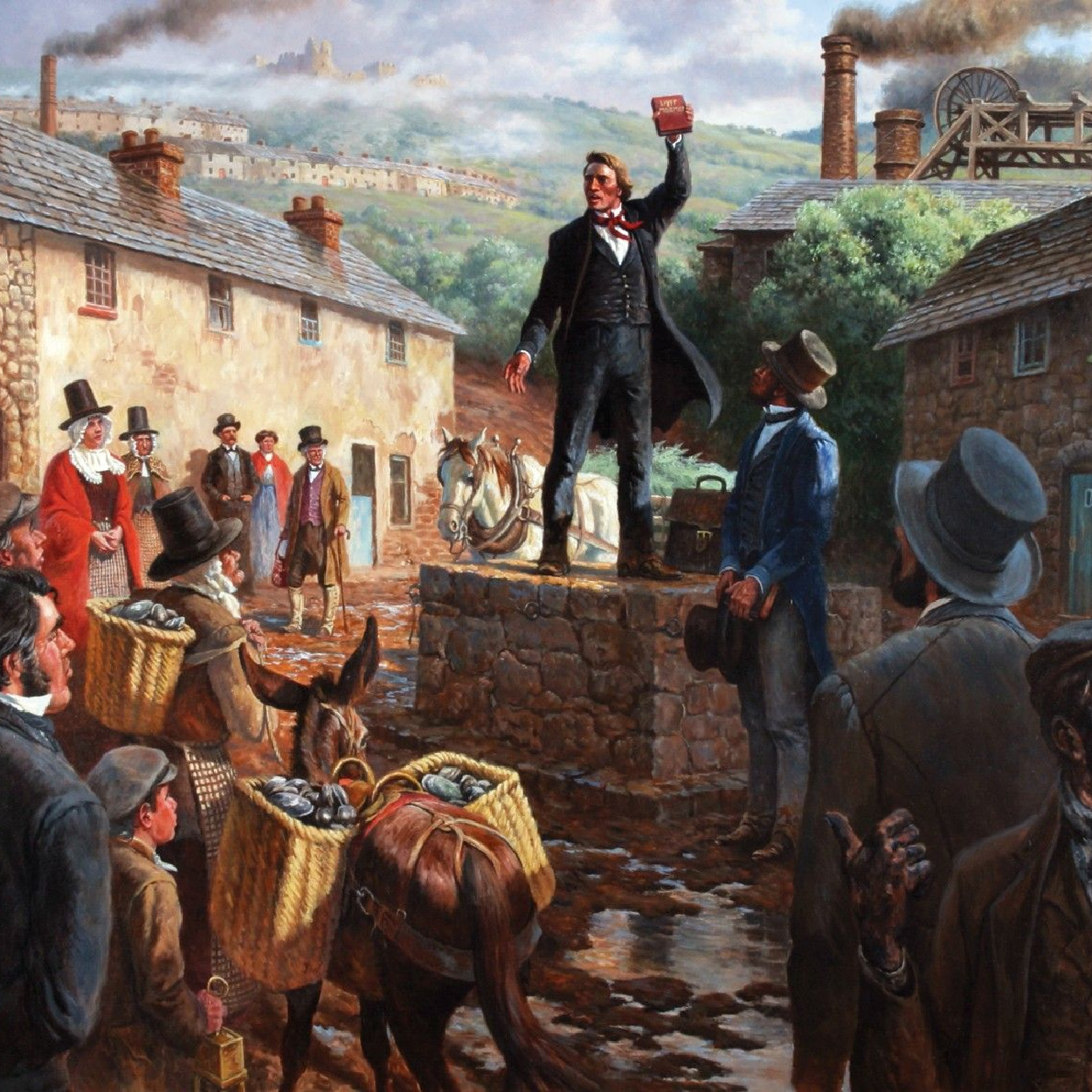In this essay, I will share some experiences from attending religious services of various faiths and what we learned from those experiences. I focus on worship services and celebrations and what I enjoyed and appreciated most about sharing sacred moments of community with others across a range of world faiths and denominations. I express my appreciation and admiration for the wonderful people of God who welcomed me to their sacred services and thus their sacred ground. 1
Episcopal and Catholic Services
I was raised in the Episcopal Church. Holy Innocents Church under Father Todd Ewald in the 1960s had a high church liturgy with a lot of incense, chanting in Latin, and other forms of religious formality. However, after the choir sang, Father Ewald often would invite the congregation to applaud although some of the older congregants seemed to disapprove.
From age 9-12 I served as an altar boy. This involved wearing red and white robes and a large crucifix. For each Eucharist (Holy Communion) service, I was assigned to carry a large wood and brass cross at the front of the Processional (when the priest, deacons, and choir come into the church and up to the front), to light and later extinguished candles using a brass lighter and snuffer, and to help Father Ewald with the preparation of Holy Communion (the Eucharist).
Throughout my life, I have attended dozens of Catholic masses in various states. They feel quite familiar to me since they have a similar structure and rhythm as the Episcopal services I grew up with. They are similar in some ways to the holy temple ordinances of my own (LDS) faith community.
Orthodox Christian
Orthodox Christian services are somewhat similar to Catholic and Episcopal services in that they are highly liturgical but are also different in some important ways. The “temple” of the church (what other churches call the nave), has dozens of icons, images of Jesus, Mary, the Apostles, Saints, and angels. There is a beautiful iconostasis (icon screen) that separates the area where congregants assemble and where the altar is (where only the priests and deacons may go through a door). There is a great deal of chanting (most of the service is sung rather than said) and a great deal of incense used.
As part of my research, I interviewed an Orthodox Christian family in which the father was a deacon in the church. He was a tall, handsome, and stately person with a regal bearing. I was deeply impressed with the family’s dedication to their prayers, held at their family’s home icon corner, and their Christian service. The next Sunday my wife and one of my daughters attended a divine liturgy with me at St. Nicholas Church. The wife of the family kindly brought over some of the altar bread (bread that is blessed but not consecrated as the body of Christ) as a token of fellowship. We felt very welcomed.
On another Sunday, after I attended services, I purchased an icon (Christ Pantocrator) from the church store. While I was enjoying eating a post-service lunch with parishioners, Father Stephen Maholick came by and noticed I had purchased an icon. He asked if I would like him to bless it. I said yes, assuming he would say a quick prayer or make the sign of the cross over it. He asked me to come into the church with him and bring the icon. He put the icon on a stand and proceeded to take about five minutes to bless it, including sprinkling holy water on it. I was deeply impressed that he would do this for a non-Orthodox visitor to his church. I have that icon on my shelf in my office at BYU and bring it to my classes each semester when we talk about Orthodox Christian families. I try to treat it as the sacred object it is and invite my students to do likewise.
African Methodist Episcopal
I have often brought one or more of my older children with me to attend the many religious services I have attended. One Sunday morning I brought my 10-year-old daughter, Kathryn, with me to an African Methodist Episcopal (AME) service held in a small chapel in New England. Having attended other services in the Black church and in Latino Pentecostal services, I prepared her for the enthusiastic form of worship we were likely to experience. I had already interviewed the pastor, a highly educated and soft-spoken man with a deep love of Jesus and his people. The first 20 minutes of the sermon was of a fairly cerebral nature, not unlike what you find in many mainline Protestant services and our own LDS services. I began to think that perhaps my daughter would not be able to experience the kind of enthusiastic worship I had told her about. But the pastor was only getting warmed up. Gradually he began getting more enthusiastic and louder in his presentation. The members of the congregation, which had called out some fairly quiet affirmations such as, “Amen” or “You got that right” also warmed up and increased the number and enthusiasm of their responses to the message. Within a few minutes, the place was “rocking and rolling” with people dancing, arms waving, some “slain in the spirit” fell into others’ arms and the energy level was palpable. My daughter’s eyes grew wider than I’ve ever seen them. A couple of times she looked over to me and saw me smiling and nodding and thus felt reassured that, although quite different from what she was used to in a church meeting, this was okay. My kids refer to churches with enthusiastic worship as “rock and roll churches” and love attending.
From Old Anglo Presbyterian to New Latino Pentecostal
One Sunday I attended services at a beautiful hundred-year-old stone Presbyterian church in which a small congregation of mostly older, white, liberal congregants worshiped in the traditional staid style of the more traditional mainline protestant churches. There were very few children and youth in attendance. The congregation was no longer able to support such a large building and so the church had recently been sold to a new, vibrant church of Latino Pentecostals and this was the final service of the Presbyterian congregation.
Two weeks later I attended services in the same building. It had now been adorned with large colorful banners and posters. The church was completely filled with Latino families with many children and teens. The pastor was a petite but incredibly dynamic and charismatic woman. The leader of the enthusiastic musical worship was her husband. It happened to be Father’s Day. I sat with my 17-year-old daughter, Rachel, in the back pew. Neither my daughter nor I speak Spanish, so we were grateful when a friendly bilingual woman sat next to us and kindly offered to translate for us.
As is typical of Pentecostal services in general, and Latino Pentecostal services in particular, the service was highly energetic, active, and involved speaking in tongues, healing, dancing, and Christian popular music—all in Spanish, of course. Young women wearing flowing gowns of various bright colors danced up and down the aisles of the church waving long brightly colored streamers as they danced.
The sermon was passionate and direct. At a certain point in her sermon, the pastor called for all the men in the congregation to come down to the front of the church. The men gathered on the three stairs and floor as the pastor stood above them, speaking in a kind but direct voice. She said that many of them had fathers who abused their mothers and children, who abused alcohol and other substances, and who cheated on their mothers with other women. She said that some of them were doing the same things in their own families. She condemned this in the strongest terms and, while reaching her arms over them, cast out “El Diablo” (The Devil) from their hearts and minds and called on them to treat their wives and children as God would want them to.
The men swayed and wept and cried out and raised their arms in prayer asking God to save them and cast Satan out of their souls and lives and help them be better husbands and fathers. While this was happening, our translator explained that most of the people there were raised in the Catholic Church but that the women had converted to this church and brought their husbands and families along with them because “this church makes our men repent and behave.”
After the service as we filed out, each father received a gift bag with several nice things including some candy and a pen with “Happy Father’s Day” inscribed on it. It was a thoughtful gesture but that service sent those men from that building with far more than some thoughtful material gifts. Throughout my life, I have been in hundreds of services of various faith communities, many that included powerful preaching and enthusiastic worship. However, I have never seen the power of religious ideas and rituals to directly and profoundly influence men for good and away from evil in their homes and family relationships more than in that service.
Charismatic Episcopal Church
I attended services at a Charismatic Episcopal Church congregation in San Anselmo, CA. That faith was fairly recently founded by a couple of Evangelical Christian pastors who read the Bible and realized that the priesthood was repeatedly mentioned in the Bible. They sought and received ordination by a renegade Catholic Bishop from Latin America.
The service was a hybrid of traditional Christian high church liturgy more common in Orthodox, Catholic, Episcopal, and Lutheran services with the contemporary low-church, praise-worship typical in Evangelical and Pentecostal churches.
The first half of the service involved the traditional elements: the priests and deacons wore robes, used candles and incense, chanted in Latin, and otherwise led a service that would have been familiar to most people used to a high church service.
Then, they literally took off their robes to reveal casual clothes, got out a guitar, a keyboard, unveiled a drum kit, and the service shifted to an upbeat, enthusiastic Contemporary Christian worship service with Christian praise songs (words being projected on the screen for everyone to sing). Hands were raised in the air, swaying ensued, “praise you Jesus” was called out, and there was speaking in tongues, healings, and other features of a Pentecostal service. Everyone there, even the older women who likely came from a more traditional background, really seemed to enjoy the combination service.
Silent Worship with Friends (Quakers)
One of the most unique services I attended was a worship service at a Religious Society of Friends (Friends, Quakers). This particular Friends Meeting was consistent with traditional Quaker practice that employed “silent worship” where the Friends gather and worship mostly in silence. This practice is still followed among many, but not all, Quaker congregations.
It is understood that Friends may speak and offer some thought or experience, but it is expected that they will examine themselves and their motivations and only speak if they feel clearly and spiritually prompted to do so. There is also a “rule” that you do not comment on anything said by anyone that previously spoke but only offer your own thoughts, feelings, or experiences. The meetinghouses are simple in décor and seats are typically arranged in a square to show equality and allow all to see and hear each other.
Once the meeting began there was a peaceful, contemplative silence for about 40 minutes. I found myself settling into an almost meditative state and enjoyed the sense of “companionable silence” that pervaded the room.
A man arose and shared an experience of nearness to nature and God and then sat down. There was then another period of silence that lasted about ten minutes. A woman then stood and shared an insight she had received the previous week from reading the Bible. After a few more minutes of silence, the leader of the meeting shook hands with the Friends on each side signaling that the meeting had come to an end. Across the country a couple of years later I enjoyed interviewing a young Quaker couple about how they used silence to help strengthen their relationship. It is interesting how profound a form of communication a “holy silence” can be.
A Day at the Masjid
One of my most enjoyable and memorable days was when I spent a day at the masjid (mosque) with my new Muslim friends. It was a beautiful day in the early spring of 2002. It took about an hour to drive to the masjid (meaning: the place of prostration—many Muslims prefer this name to the term mosque). During that drive, I listened to a book on tape by the late, great scholar of world religions, Huston Smith, in which he described Salat—the Muslim practice of prayer. As part of this, he mentioned the ablutions (washings) that a Muslim performs in preparation for prayer. A faithful Muslim prays five times a day, wherever he or she is when the time for prayer comes. On Friday afternoon men are expected (and women invited) to pray at the Masjid with other Muslims.
I walked into a beautiful building that, not surprisingly, had a bit of a Middle Eastern flavor in the architecture. I found the door the men were entering and went in and removed my shoes. I was greeted by a number of friendly men who warmly welcomed me as a guest and escorted me to the back of the prayer hall. I sat on the floor during the service.
Much of the service, except the sermon, was in Arabic so I only understood a few words here and there. When the service was over, I walked from where I had been sitting to the door where everyone was leaving. In my ignorance, I accidentally walked in front of a man who was still praying. He reached out his arm and stopped me from walking in front of him and gently moved me behind him without looking at me or saying anything. I apologized to him. When I reached the door a man explained that since he was in the midst of prayer, he did not want to have a human being in front of him as that would be idolatrous.
The men escorted me downstairs where a meal was being served. Each paid for their lunch but when I reached for my wallet to pay they would not allow me to do so but insisted I was their honored guest.
After the wonderful meal, I interviewed a remarkable family for more than two hours. They told me about their lives as Muslims, their experience as a family going on the Hajj (the pilgrimage to Mecca), and how things had changed for them since the terrorist attacks on September 11, 2001, just a few months before. I felt a deep respect and appreciation for this faithful family.
After this interview, I then interviewed the Imam (prayer leader) of the Masjid. In response to each question I asked, the Imam would first quote, in Arabic, a passage or two from the Qur’an and the Hadith (sayings of Muhammed), then he would translate this into English, and only then would he provide his own thoughts on the matter.
During my interview with the Imam, the call to prayer came and he said he needed to go lead the prayers and asked if I would like to join them. When I said that I would be delighted to, he asked if I had ever seen the ablutions that Muslims perform before they pray. I told him I had not and he invited me to come and watch. He led me into the washing area of the masjid and told me he would be washing various parts of his body in preparation for prayer. He washed his head, eyes, nose, mouth, ears, arms, hands, legs, and feet, always the right one first. I was reminded of sacred washings and anointings done in holy temples of The Church of Jesus Christ of Latter-day Saints.
Jewish Sabbath Services
One of the things I was most impressed by was the seriousness with which many Jewish individuals and families observed the Sabbath. I have attended dozens of services at shuls (synagogues) in various cities across America. I have always been impressed with the (largely) empty parking lots at Orthodox shuls on the Sabbath (some drive to shul before sundown and leave their car parked there until after sundown on Sunday). One of the Orthodox husbands I interviewed had to walk 10 miles to get to shul and attended regularly.
It is not just Orthodox who deny themselves various minor (and some major) conveniences to honor the Sabbath. When I was at a Reform service I was talking with a man and he invited me to interview him. I reached in my coat pocket for a pen to write down his name and number but had forgotten to bring a pen. When I asked him if he had a pen that I could borrow he said he did not carry pens or money on Shabbat.
I interviewed a modern Orthodox Rabbi at the shul (synagogue) on Saturday after services. After the interview, he invited me to his home for dinner. We walked along the sidewalk from the shul to his home through an upscale neighborhood. When we got to a certain point he asked if we could move out into the quiet residential street for about half a block, at which point he guided me back to the sidewalk and we continued on our way. I asked why we did that, and he said there was a house with a porch light with a motion sensor, and the first time he walked home that way in the evening he tripped the light. Since observant Jews are enjoined from “kindling a light” on Shabbat he simply went out of his way a bit to avoid doing so.
As a member of one of the relatively few remaining Christian faiths (along with Seventh-day Adventists) that have a fairly strict way of observing the Sabbath, I was touched and inspired by the way one of my new Jewish friends remembered, honored, and observed the Sabbath.
A Good Friday: Catholic, Muslim, and Jewish Services
On Good Friday in 2002, I attended a morning Catholic mass at a cathedral, Friday afternoon prayers at a masjid, and a Modern Orthodox Shabbat evening service at a synagogue.
In Catholicism, Cathedrals are the seats of the Bishop and the holy day services are often of greater solemnity than usual. This was especially true on Good Friday. Of course, the mass focused on the last week of Jesus’s life, centering on sufferings and his Passion at Golgotha.
At the Masjid, the prayers were similar to what I had experienced before but the Imam’s sermon was entirely devoted to Jesus, whom Muslims refer to as Isa. The Imam quoted various passages from the Qur’an that discuss Isa—his life and ministry. Much of what was mentioned would be familiar and comfortable to most Christians: Isa was born of a pure virgin—Maryam (Mary). He performed many miracles (always by the leave of God—Allah). He healed many infirmities—again by the permission and power of Allah. He was a great messenger of God, was the Messiah, and will return again to earth. There were other passages that would make many Christians uncomfortable (and some angry): Jesus is not the Son of God (since God is not begotten nor does God beget), not the Savior, and was not crucified or resurrected (Allah substituted a criminal for Jesus who was crucified in his place).
The Imam said emphatically and repeatedly that a Muslim who does not accept the “Messengership of Isa” couldn’t be considered a Muslim. I was intrigued to hear about how much reverence Muslims have for Jesus, not as Lord and Savior, but as a great prophet and messiah (anointed of God to bless others).
I then attended Shabbat services at a Modern Orthodox synagogue and interviewed the Rabbi following the service. It was, all in all, a special Good Friday as I was able to worship with my friends from all three Abrahamic faiths in one spiritual feast of a day.
Some Final Thoughts and Pragmatics
God loves all of the human family. He loves all of His people across all faiths and cultures. From attending services with friends of many faiths, I’ve learned in personal ways that many of my fellow human beings, my brothers and sisters from all faiths, love God, worship God, are devoted to God, and praise God in many ways. But, at its core and in many ways, the essence of that worship and devotion is similar. The devotion, sacrifice, and commitment involved in seriously studying sacred texts, sincerely singing sacred hymns, meaningfully praying to God are all profoundly human actions.
Yes, differences matter. The forms of worship that people employ make a difference. There are striking differences between silent meditation and loud singing of Christian rock songs. They are very different experiences. Both, however, come from a place of love and devotion to God.
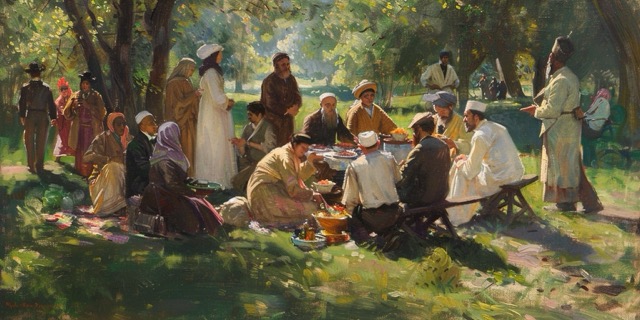
I’ve enjoyed being with thousands of people in hundreds of congregations across the country. I’ve felt great unity with those of other faiths. I believe that if people knew more about their fellow worshipers of God, and took the time to respectfully inquire about their sacred beliefs and practices—and occasionally attended with others, all would benefit and be blessed.
I give BYU (nearly all LDS) students in my Families in World Religions class a homework assignment to attend a service of another faith. They often ask me pragmatic questions, like what should I wear? What’s it going to be like? (And so forth.) In my experience, it doesn’t usually matter what you wear. Modest clothing is usually better because some faiths, especially Orthodox Judaism, Islam, and The Church of Jesus Christ of Latter-day Saints, really do have issues around modest dress.
One of the main questions my students ask me is what you feel comfortable doing when you attend other services. Do you say their prayers and sing their hymns? Will you recite their creeds? I believe that there’s no right answer to this. Each person would have a different approach.
My main rule is I try to participate as much as I can. I do not recite the creeds of other Christian faiths because those are statements of belief. Nor do I take the Eucharist. These are forms of commitment to that particular faith that I would not participate in (nor would those who devotedly follow those faiths want me to participate). Even so, I stand when others stand. I do not say what’s being said, but I stand in honor of that faith and those who believe and try to live that faith.
Another pragmatic question is about making a financial offering or not. I remember that as a kid going to services at the Episcopal Church if I forgot to bring some money when the plate would be passed around for the offering (collection), I felt guilty. So, if they do pass a collection plate, my practice is to make a small monetary offering. For me, that’s not indicating support for their religion per se. Rather it is a tangible appreciation for the leaders and those who’ve done service and upkeep of the building and grounds. I just see it as supporting my fellow believers in God, in their respective worship of God. Also, after the service, many congregations hold some kind of social gathering with refreshments served and so a small donation helps defray those costs.
I invite my fellow Latter-day Saints to consider the potential value of going to other services on occasion. Expect to be warmly welcomed and treated well. Expect to be a little surprised and, perhaps, to be a little uncomfortable (because it’s new and different). However, expect that it will be worth it and expect that you will be grateful that you made the effort to respectfully participate in and more deeply experience and learn of how others in the human family approach and honor God.
[footnote num=”1″]I do not provide a detailed description of these services. For that kind of information I highly recommend How to Be a Perfect Stranger: The Essential Religious Etiquette Handbook (now in its 6th Edition). It provides general information about services from many faiths as well as helpful tips on attending including regular worship services, weddings, christenings, bar/bat mitzvahs, and many others.[/footnote]
For additional reading:
Catholic and Orthodox Christian Families: Confession and Forgiveness
Muslim Families: A Closer Look at Answering to Allah
Jewish Families: How Teachings and Traditions Strengthen Marriage and Family Life

